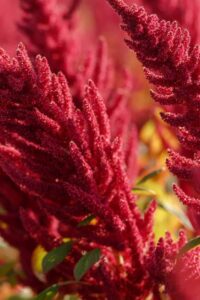
- Dt.inderjit.walia@gmail.com
- +91 89308-32001
Menu
Millets, small seeded grasses, are highly nutritious and even outperform basic cereals like rice and wheat in many nutrients. These provide essential nutrients such as niacin, magnesium, phosphorus, manganese, iron, and potassium. Barnyard millets (Echinochloa frumentacea) are considered small millets yet have high nutritional value and antioxidant activity. Barnyard millet (Echinochloa esculenta) is a very nutritious crop with climate-resilient properties. Barnyard millets (Echinochloa esculenta) are a diverse species of small-seeded grasses cultivated globally as cereal crops and fodder. Millets belong to the grass family Poaceae, specifically the subfamily Panicoideae. Millet grain contains around 65% carbohydrate, primarily in the form of non-starchy polysaccharides and dietary fiber. These nutrients aid in constipation prevention, cholesterol reduction, and slow glucose release during digestion. Barnyard millet includes 6.2g of protein, 65.5g of carbohydrates, 2.2g of fat, 9.8g of crude fiber, 4.4g of mineral matter, 11g of calcium, 280 mg of phosphorus, 15.0 mg of iron, and 51-62% starch. Adding millets to refined wheat flour can enhance the nutritional value of bread and other goods while also altering the flour’s functionality. Barnyard millet (Echinochloa species) is the oldest millet crop grown in tropical and temperate regions of Asia, including India, China, Japan, and Korea. Barnyard millet, also called Japanese barnyard millet (Echinochloa crus-galli), Barnyard millet (Echinochloa colona) is an ancient grain that is grown in warm and temperate regions, mainly in India, China, Japan, and Korea. Other names for it include cockspur grass, sawa millet, prickly millet, Korean native millet, and watergrass. Around 250 annual and perennial species of Echinochloa are cultivated in all agroclimatic zones across the globe. Barnyard millet, also known as Swank or Shyama, is a millet crop that grows quickly and can be harvested in as little as six weeks. A useful food crop with a high vitamin and antioxidant content is barnyard millet. It is perfect for usage in health foods because it is also devoid of gluten.
Kingdom: Plantae
Order: Poales
Family: Poaceae
Genus: Echinochloa
Species: frumentacea

